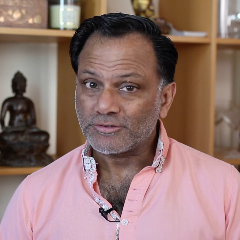You are not currently logged in. Please create an account or log in to view the full course.
The Working Memory Model
- About
- Transcript
- Cite
Memory – Working Memory
In this course, Dr Ashok Jansari (Goldsmiths, University of London) explores the working memory model. In the first lecture, we think about the history of the model and its origin as a development on from the multi-store (or modal) model of memory. In the second lecture, we think about three primary pieces of evidence for the phonological loop: the phonological similarity effect, the word length effect, and the unattended speech effect. In the third lecture, we think about neuroscientific evidence for the working memory model, citing patient KF and Baddeley & colleagues’ 1986 research on dual task performance of people with dementia as evidence. Next, we think about neuroscientific evidence for the central executive, citing Phineas Gage and patient EVR as key case studies, as well as introducing the Jansari assessment of Executive Functions (JEF) as a modern assessment of executive function. In the fifth and final lecture, we consider memory from a developmental psychology perspective and explore why children develop different aspects of memory with different proficiencies.
The Working Memory Model
In this lecture, we think about the working memory model, focusing in particular on: (i) the origins of Baddeley and Hitch’s working memory model; (ii) Atkinson and Shiffrin’s multi-store model of memory, which the working memory model superseded; (iii) the role of patient KF in demonstrating the flaws of the multi-store/modal model of memory, which led to the development of the working memory model.
Cite this Lecture
APA style
Jansari, A. (2022, March 15). Memory – Working Memory - The Working Memory Model [Video]. MASSOLIT. https://massolit.io/courses/memory-working-memory
MLA style
Jansari, A. "Memory – Working Memory – The Working Memory Model." MASSOLIT, uploaded by MASSOLIT, 15 Mar 2022, https://massolit.io/courses/memory-working-memory

